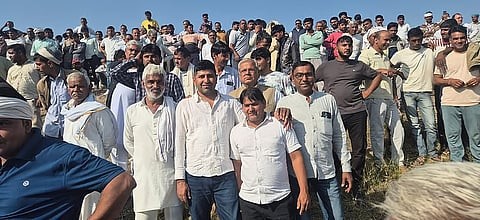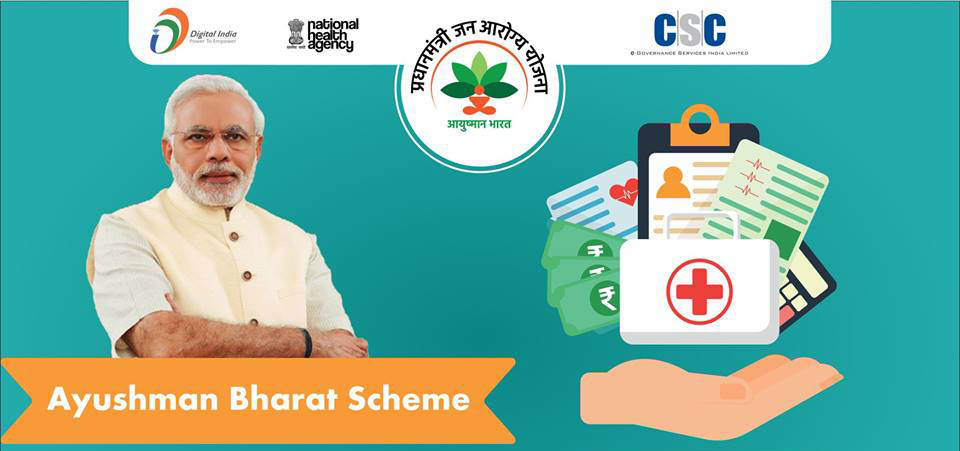Description
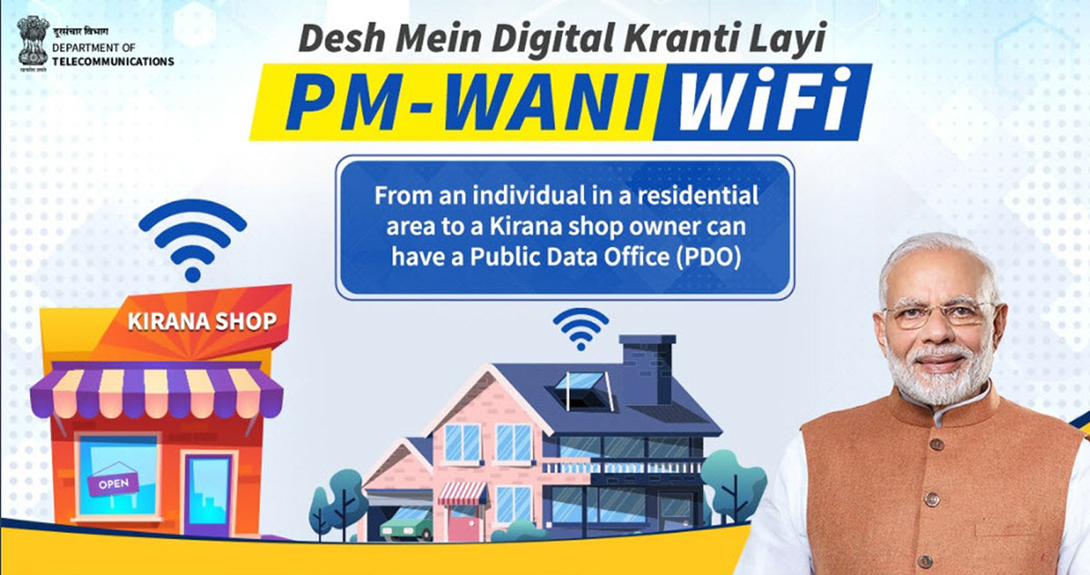
Copyright infringement not intended
Picture Courtesy: https://reisnet.in/pmwani/
Context: The Prime Minister Wi-Fi Access Network Interface (PM-WANI) scheme is a government initiative aiming to provide public internet access across India.
PM-WANI Scheme
- The Prime Minister Wi-Fi Access Network Interface (PM-WANI) is a government initiative launched in December 2020 by the Department of Telecommunications (DoT).
- It establishes a framework for setting up a vast network of Wi-Fi hotspots throughout the country, particularly in underserved rural areas. This initiative aligns with the National Digital Communications Policy, 2018 (NDCP)'s goal of creating a robust digital infrastructure.
|
National Digital Communications Policy 2018
|
|
Objectives
|
●Broadband for all
●Create four million jobs in the Digital Communications sector.
●Enhance the Digital Communications sector's contribution to 8% of India's GDP.
●Promote India to the Top 50 Nations in the ICT Development Index of ITU.
●Enhance India's contribution to Global Value Chains.
●Ensure Digital Sovereignty.
|
|
Vision
|
●Fulfill information and communication needs of citizens and enterprises.
●Support India's transition to a digitally empowered economy and society.
|
|
Missions
|
●Create robust Digital Communications Infrastructure.
●Enable Next Generation Technologies and Services.
●Ensure Sovereignty, Safety, and Security of Digital Communications.
|
|
Features
|
●Provide universal broadband connectivity at 50 Mbps to every citizen.
●Attract investments of USD 100 billion in the Digital Communications Sector.
●Providing training to one million manpower for building New Age Skill.
●Expand the Internet of Things (IoT) ecosystem to 5 billion connected devices.
●Establish a comprehensive data protection regime for digital communications.
●Facilitate India's effective participation in the global digital economy.
|
|
Strategy
|
●Establish a National Digital Grid.
●Establish Common Service Ducts and utility corridors in new city and highway road projects.
●Create a collaborative institutional mechanism for Common Rights of Way.
●Remove barriers to approvals.
●Facilitate the development of Open Access Next Generation Networks.
|
Objectives of PM-WANI
- Enhanced Internet Penetration: The scheme seeks to bridge the digital divide by increasing internet connectivity options, particularly in remote locations. This promotes wider internet adoption and fosters a more digitally inclusive society.
- Boosting Digital Economy: By providing affordable internet access, PM-WANI empowers individuals and entrepreneurs to participate in the digital economy. It facilitates online businesses, education, healthcare, and other digital services, leading to economic growth.
- Income Generation Opportunities: The scheme allows local shopkeepers and entrepreneurs to set up Public Data Offices (PDOs) to provide Wi-Fi services. This creates additional income sources and fosters micro-entrepreneurship in rural areas.
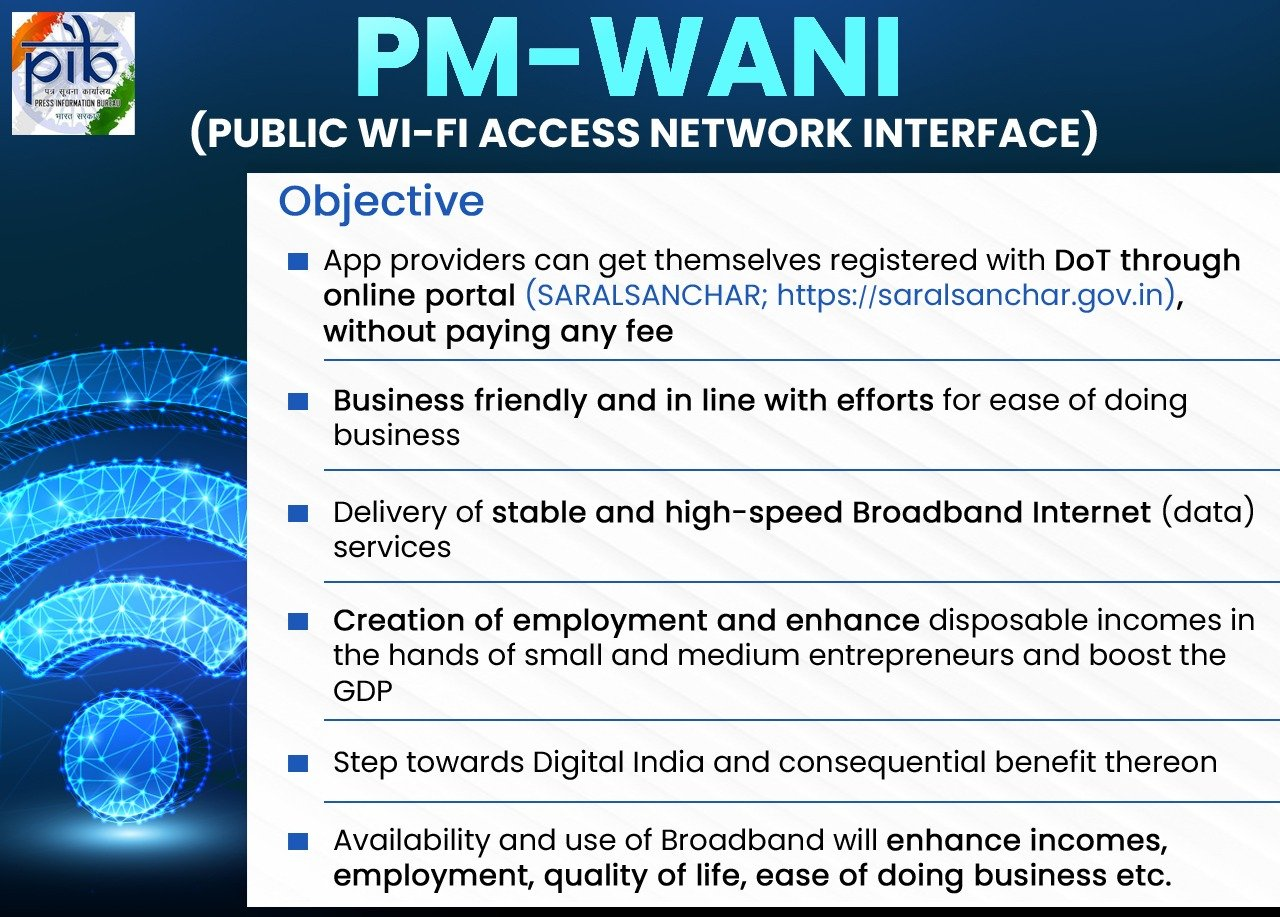
Components of PM-WANI
The PM-WANI framework consists of several key players working together to deliver public Wi-Fi services:
- Public Data Office (PDO): Any local shop, kirana store, or entrepreneur can register as a PDO to provide Wi-Fi services in their vicinity. They can purchase internet bandwidth from telecom service providers and offer it to users at a minimal cost.
- Public Data Office Aggregator (PDOA): PDOAs are entities that help PDOs with onboarding, registration, billing, and network management. They act as intermediaries between PDOs and telecom service providers.
- App Provider: These service providers develop mobile applications that users can utilise to discover, register, and connect to PM-WANI Wi-Fi hotspots. The app may also facilitate payment for internet access at paid PDOs.
- Central Registry: This government-maintained online platform serves as a central repository for all PM-WANI stakeholders. It facilitates registration, record-keeping, and ensures the smooth functioning of the ecosystem.
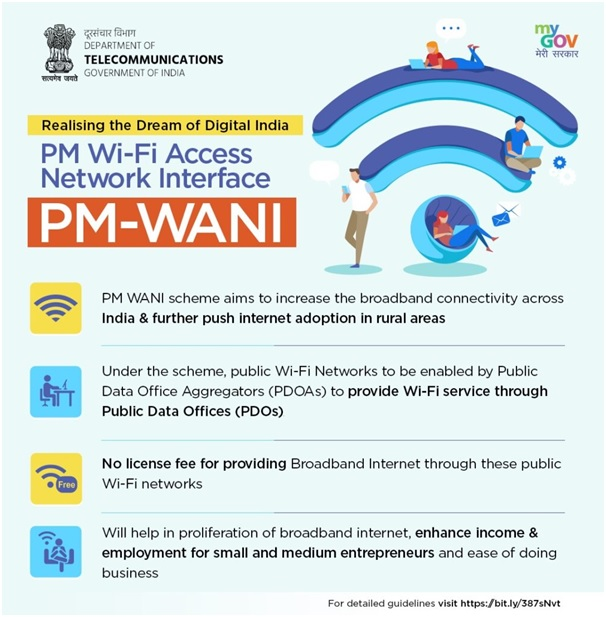
Implementation Steps
- Deployment of Public Wi-Fi Hotspots: This involves setting up Wi-Fi access points in public locations like parks, bus stands, railway stations, etc. The government can directly deploy these hotspots or partner with private companies or organizations.
- Establishment of Public Data Offices (PDOs): This is a crucial element for expanding Wi-Fi access in rural and unserved areas.
- PDOs are essentially local entrepreneurs who set up Wi-Fi hotspots with the help of PM-WANI.
- The government provides a framework and facilitates the registration process for PDOs.
- PDOs can leverage existing infrastructure like buildings, electricity connections, etc. to set up their hotspots.
- Integration with Existing Infrastructure: PM-WANI aims to utilise existing infrastructure wherever possible to minimise deployment costs. This can involve integrating Wi-Fi access points with existing telecom towers, fibre optic networks, or government buildings.
- RailTel leverages its existing railway infrastructure to provide PM-WANI Wi-Fi in over 6,100 railway stations across India.
Benefits of PM-WANI
Affordable Connectivity
- Reduced Reliance on Expensive Data Packs: PM-WANI provides public Wi-Fi hotspots, particularly in rural areas where mobile data plans can be costly. This allows users to access the internet without incurring high charges, especially for occasional use.
- Pay-Per-Use Model for Rural PDOs: The scheme allows for setting up PDOs (Public Data Offices) in rural areas. These PDOs offer Wi-Fi at minimal charges, following a pay-per-use model. This caters to users who might not need a full-fledged data plan but require occasional internet access.
Digital Inclusion
- Bridging the Digital Divide: A significant portion of India's population, particularly in rural regions, lacks access to reliable internet. PM-WANI hotspots bridge this gap by offering internet connectivity in public places like railway stations and through PDOs. This enables them to access government services, educational resources, and online opportunities.
- Improved Access to Information & Services: With PM-WANI, people can access information and services online, regardless of their socioeconomic background. This empowers them to participate in the digital economy, avail of government schemes, and stay informed.
Empowerment of Citizens
- Entrepreneurship Opportunities: PM-WANI allows individuals to become PDO operators, setting up Wi-Fi hotspots in rural areas. This creates income-generation opportunities and promotes local entrepreneurship.
- Enhanced Skill Development & Education: Increased internet access empowers citizens to access online educational resources and skill development programs. This fosters personal and professional growth, improving employability and career prospects.
|
PM-WANI offers a multifaceted approach to promoting affordability, digital inclusion, and citizen empowerment. By making internet access more accessible and affordable, the scheme provides the way for a more digitally connected and empowered India.
|
Potential Challenges and Way Forward
- Cybersecurity: Public Wi-Fi inherently carries security risks.
- Public Awareness Campaigns: Educating users about safe browsing practices and the importance of strong passwords can minimize vulnerabilities.
- Promoting VPN Use: Encouraging users to employ Virtual Private Networks (VPNs) when accessing sensitive information on public Wi-Fi can provide an additional layer of security.
- Network Security Measures: Implementing strong encryption protocols and user authentication mechanisms on PM-WANI hotspots can further enhance security.
- Sustainability of PDOs: Ensuring rural Public Data Offices (PDOs) remain profitable is crucial for long-term success.
- Microloans or Subsidies: Government or financial institutions could offer financial assistance to help PDOs with initial setup costs and infrastructure investment.
- Value-Added Services: PDOs could explore offering additional services like basic printing or device charging for a small fee to supplement their income.
Conclusion
- The Prime Minister Wi-Fi Access Network Interface (PM-WANI) scheme is a transformative initiative aimed at providing affordable and universal internet access to every citizen of India, promoting digital inclusion, empowerment, and socio-economic development.
Source:
Business.outlook India
Vikaspedia
PIB
|
PRACTICE QUESTION
Q. Evaluate the scalability and sustainability of the PM-WANI model, considering factors such as the need for continuous investment in infrastructure upgrades, maintenance costs, and the potential for market saturation or disruptive technologies. Propose strategies to ensure the long-term viability of the PM-WANI initiative.
|








